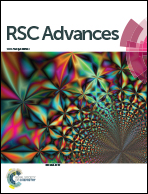Synthesis and microwave absorption properties of Fe@carbon fibers
Abstract
Composites of carbon and magnetic metal can overcome the eddy current effects and high density of traditional magnetic metals based on their synergistic loss mechanism and tunable electromagnetic properties. Herein, Fe@carbon fiber particles were synthesized by growing iron nanoflakes on the surface of carbon fibers via in situ reduction. The surface morphology, lattice structure and element composition of the synthesized Fe@carbon fibers were analyzed by scanning electron microscopy (SEM), X-ray diffraction (XRD) and energy disperse spectroscopy (EDS) respectively. Based on these qualitative analyses, a possible growth mechanism was proposed for guide production. In order to investigate their electromagnetic absorbing properties, electromagnetic parameters of Fe@carbon fibers-paraffin composites have been evaluated by coaxial reflection/transmission technique. The Fe@carbon fibers-paraffin composites containing different particle contents were prepared to clarify the optimum material ratio. The results showed that the composite loaded with 30 wt% carbon fibers@Fe particles exhibited the most prominent microwave absorption, with strong absorption (maximum reflection loss of −39.8 dB), effective absorption bandwidth (2.9 GHz) and small thickness (1.5 mm).



 Please wait while we load your content...
Please wait while we load your content...